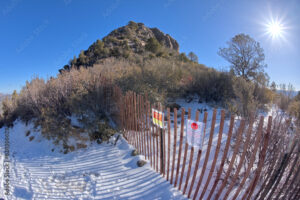The First Steps in Building A Fence
The first step in building a fence is to mark the area for your bar. It is the time to get a property survey if required by regulations in your community. Dig terminal holes that are large enough for the posts and fill them with well-tamped gravel. This method of post-setting is more resilient than concrete and allows for natural drainage.

Fences can be made from various materials, including natural or pressure-treated woods, metals, and vinyl. They can add privacy and security to your property and are available in many different designs that complement the style of your home. Fences are also more cost-effective than walls and require less labor to construct. Visit https://fencingsummerville.com/ for more details.
If you choose to build a wood fence, it is best to use a material that has been pre-treated and sealed to prevent the wall from warping over time. Wood fences can be painted or stained for a custom look or left untreated for a more rustic appearance. A coat of oil or stain should be applied annually. To keep your wood fence looking good,
In addition to being a practical way to delineate your property lines, a fence can help protect children and pets from traffic or other hazards on your site. When deciding on the material for your bar, it is important to consider its aesthetics and how it will look on your land. Fences are available in various colors and styles to match your property and enhance curb appeal.
When building a fence, be sure to have your property surveyed before starting construction. Ensuring the wall does not infringe on your neighbor’s property is important. It is also a good idea to get the names of your neighbors and their addresses in case the need arises to contact them about an issue with the fence. If you’re building a wall near a roadway, include a project information panel at least 4 feet above ground level on each side of the wall that fronts a public thoroughfare. The board should be constructed of durable, weatherproof, flame-retardant material and contain the contractor’s contact information in case of an accident.
The material, size, and design of fence posts can make or break a fence’s strength, beauty, and longevity. A local lumber supply store or fencing contractor can assist you with selecting the best wood and post designs for your property.
The most common and popular wood for fence posts is cedar. It combines a beautiful appearance, natural insect resistance, and durability at an affordable price. Cedar can be used untreated or treated with a translucent or opaque stain. Spruce or pine posts are another option but may provide a different aesthetic and insect protection than cedar.
Depending on the climate of your region, you can also choose decay-proof wood posts. These types of posts have tight, centered growth rings, which help resist the rot caused by moisture. If you use pressure-treated sticks, look for AWPA grade UC4A for general use or UC4B for severe weather conditions.
If you use a steel post, it is best to select a galvanized post. It will help prevent moisture-based problems and protect the post from rust. Plastic posts are also a good choice, but choose one that is pre-galvanized. Freezing temperatures can cause plastic to become brittle, so they are not a good option in cold regions.
Other types of posts include gate, corner, and pull posts. Gate posts support gates and hold hinges and latches. Corner posts provide extra stability and are often used at intersections of roads or driveways. Pull posts are used for fencing over stairways and steep grades. They require extra strength and can be reinforced with angle braces.
Posts are essential to the structure of any fence. They determine the height of the fencing and provide a sturdy base for rails. They can be made of wood, metal, or other materials. Depending on the type of project, posts may need to be set in concrete or buried in soil.
You’ll need a manual posthole digger or auger to dig holes for fence posts. These tools are heavy enough to break through hard dirt or old concrete and should be easy to operate if you’re familiar with them. Before digging, it’s a good idea to check with your local building code office to ensure you meet any required height requirements or obtain the necessary permit.
Most people opt to set their fence posts in concrete, as this method provides more stability than just putting them in the ground. However, you can also get fairly stable results using other methods. For instance, you can install metal or pressure-treated wood posts, which are resistant to rot and rust.
When installing wood fence posts, it’s important to choose arrow-straight ones. It will ensure that the fence is a uniform length and that you don’t end up with stubby little fence sections near corners or gates. Typically, pressure-treated pine is a good choice, although other species can work as well. Just be sure to choose a treatment with a 0.4 lb/ft3 rating or higher.
To set the fence posts, you’ll need to add a few inches of gravel to the bottom of each hole. It prevents the seat from coming into direct contact with the ground, which could cause it to rot. Then, you can add concrete to the top of each post. Mixing the concrete one bag at a time and pouring it into each hole before the concrete sets is a good idea. It will help prevent the concrete from becoming uneven or sloping over time.
A rail is a set of steel bars placed end to end in two parallel lines. It transmits the load of trains, cars, or other vehicles to the track formation through sleepers and ballast. The rails are a critical component of any train system. They can carry heavy loads and have very low friction with the tires of locomotives and rolling stock. In addition, rails are designed to be welded together for long lengths. It makes them stronger and more durable.
Ruby is a programming language that uses a framework called Rails. It has a large community and is very popular on the social coding site Github. This community offers a variety of resources, including tutorials, meetups, and conferences. It also has a wide range of jobs and recruiters and examples of businesses that use the framework to build websites.
Rails follows a principle of “convention over configuration” (CoC). That means that configuring files is not necessary when developing an application. Instead, the Rails framework provides a set of conventions that improve development efficiency. It also includes a testing framework and scaffolding tools that make writing web applications faster and easier.
In addition to these benefits, the Rails framework is flexible enough to support a wide variety of websites. It can be used to create both front-end and back-end components. In addition, it can be used to build complex applications with many data sources and relationships.
Rails is a powerful web framework that can be used to build front-end and back-end website components. It is a popular choice among developers because of its flexibility, support for testing, and ability to run on both Windows and macOS.
Fence gates provide a visual barrier to your property, creating a sense of seclusion and privacy. They also help to improve security by preventing unwanted visitors from entering your home. Gates can be made of wood, vinyl, or metal and are available in various sizes and styles. They can be installed as in-swinging or out-swinging doors and are typically lockable.
Gates can be constructed in a wide variety of designs to match the style of your home and the landscape. They can also complement other features, such as wrought iron or ornamental gates and hardware. Gates can be built for both residential and commercial properties.
When building a gate, choosing the right material and construction technique is important. Different materials require different levels of maintenance and will withstand various weather conditions. Choosing the right material depends on several factors, including budget, climate, and aesthetics. Redwood is a popular choice for gate construction because it is durable and weather-resistant. Its durability makes it a cost-effective option for long-term use. Cedar is a good alternative to redwood because it is affordable and easy to work with. However, it can warp if exposed to the sun for prolonged periods.
Once the rails are constructed, it is important to mark and pre-drill the locations for the gate hinges. Use a speed square to help you straighten the line, then attach the hinges using lag screws.
Adding diagonal bracing to the frame is a good idea to prevent the gate from sagging. Diagonal supports run from one corner of the inside edge to the other, making a big difference in your entrance’s solidity. These support systems are more complicated than simple corner brackets but can prevent sagging for years.
